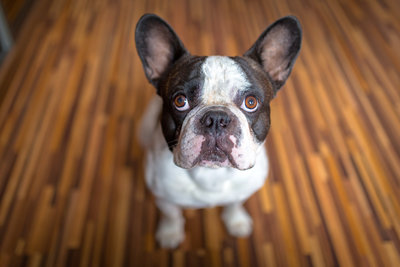Not all dogs get ear infections, but those that do can get a lot of ear infections–so many and so often that they nearly have to live with continuous discomfort in the ear. Modern veterinary medicine treats ear infections with medications, topical creams and even surgeries. Many of these treatments can work in the short term, but dogs have a way of building tolerances to medicine, and surgeries don’t always fix the over-arching problem. Fortunately, there are a variety of holistic, natural treatments* that can help stop the problem.
Risk Factors
Before you treat your dog for ear infections, it helps to understand what factors can put your dog at risk for more ear infections. Risk factors include:
- Long ears: Long, floppy ears create a dark, moist environment where yeast and bacteria can easily grow.
- Spending time in water: Ear infections are common in dogs that frequently have wet ears.
- Allergies: If your dog has allergies, his or her ears will be more sensitive to particles floating around in the air. In addition, any itching and scratching your pet may do can exacerbate his or her condition, leading to infections.
- Recent vaccinations: Vaccinations can put a dog at higher risk of developing an ear infection for a few days after the vaccination is administered.
- Presence of too much ear wax: Ear wax can trap debris, putting your dog at a higher risk for an infection.
Methods for Prevention
Some of the best ways to help prevent your dog’s ear infections is to practice the following simple at-home methods:
- Keep your dog’s ears clean. Using a cotton ball dipped in green tea, rub the inside of your dog’s ear. You can also use a Q-tip dipped in green tea to gently rub the inside walls of the ear canal, without sticking the Q-tip too far into the dog’s ear. Green tea is slightly acidic and antibacterial, which can help clear away debris that might gather in your dog’s ears. Once you’re done, use a dry cotton ball to dry your dog’s ears.
- Dry your dog’s ears after bathing and swimming. Use a soft cotton towel to dry your dog’s ears after swimming, bathing and playing in the rain. This is especially important for dogs that have long, floppy ears, because they are the most likely to stay wet long after your dog has been out of the water. Be gentle when drying the ears, to avoid pushing water deeper into the canal.
- Alter your dog’s diet. Diets high in sugar and grain can lead to production of yeast in the ears, causing infections. Monitor your dog’s diet carefully, and switch to a homemade diet if you’re having a hard time finding commercial food that is low in sugar.
Following the above tips should help your dog stay free of ear infections and may even keep your dog healthier overall. At National Animal Supplement Council, we promote healthy living for dogs, cats and horses. To join our ranks and support our efforts, contact us about membership today.
*The NASC does not endorse all of the products on external websites. Please always check for the NASC Quality Seal!


